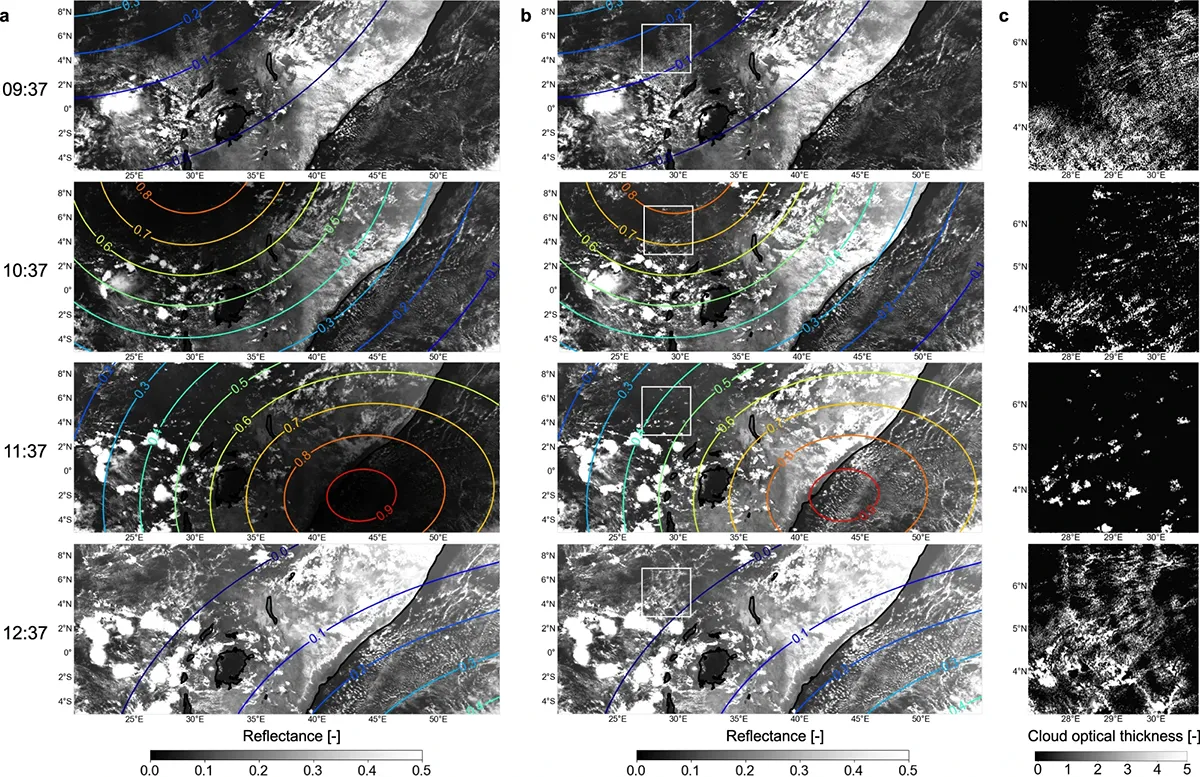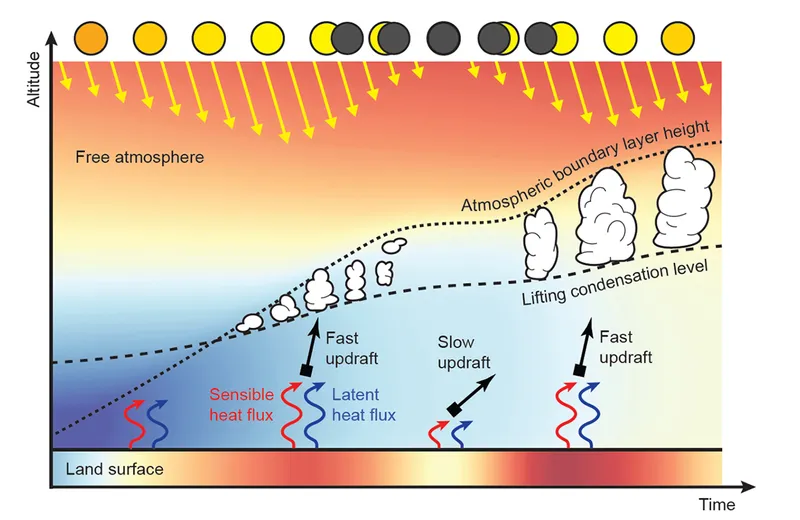If you’ve ever been lucky enough to witness a solar eclipse, you’ll certainly have been struck not only by the eery dimming of the light in the middle of the day, but also by the sudden chill in temperature.
There have also been reports that just before totality, low-level clouds dissipate, raising the intriguing possibility that solar eclipses could also influence regional weather as the Moon’s shadow passes across Earth.
Victor Trees at the Royal Netherlands Meteorological Institute in De Bilt, and his colleagues, set out to investigate this effect.
They turned to data from Earth observation satellites in geostationary orbit, which can provide imagery over large geographical areas, and focused on three solar eclipses between 2005 and 2016.

How solar eclipses clear cloud
They analysed the type of clouds present in the skies both immediately before and during each eclipse.
They found that even partial eclipses can indeed change the pattern of clouds: low-level cumulus clouds were observed to dissipate, whereas higher-altitude clouds were unaffected.
And this effect on diminishing cloud cover happens even with only around 15% of the Sun’s disc obscured.
To drill down into what’s going on, they ran atmospheric simulations, which showed that the clouds start disappearing 15–20 minutes after the ground cools in the Moon’s shadow.
This equates to the time it takes warm, moist air near the ground to rise to a cooler altitude where the water vapour condenses into cloud.
On the face of it, this might appear to be nothing more than a curious observation on the short-term effects of solar eclipses on cloud patterns.
But, the study argues, this demonstration of just how sensitive low-level cloud cover is to even small reductions in the incident solar radiation could have profound implications.

Geoengineering climate change - a warning
Climate change is already proceeding at an alarming rate, and if international efforts to limit greenhouse gas emissions are not successful quickly enough, some scientists have suggested we may need to resort to more radical means to counter the rising temperatures.
One proposal is to reduce the amount of the Sun’s light reaching Earth’s surface, by means of huge-scale ‘geoengineering’ projects.
These might include assembling huge mirrors in space to act as a sunshade or spraying an aerosol of sulphates high into the stratosphere to reflect away some of the sunlight before it reaches the surface.
But, as the researchers warn from this solar eclipse study, reducing the amount of solar radiation can have unintended consequences on cloud patterns.
It is thought that the overall effect of low-level cumulus clouds is to reflect away some of the sun’s heat, and if an artificial sunshade acts to dissipate such clouds (just as with a solar eclipse), it would reduce the effectiveness of the geoengineering approach.
What’s more, it could also hamper the formation of larger, possibly rain-bearing, clouds and so disrupt Earth’s natural atmospheric processes in other ways.
The key message here is that Earth’s atmosphere and climate are very complex systems, and we would be wise to proceed extremely cautiously before attempting any geoengineering solutions to climate change.
Lewis Dartnell was reading Clouds Dissipate Quickly During Solar Eclipses as the Land Surface Cools by Victor J H Trees et al Read it online at: arxiv.org/abs/2402.08510.
This article appeared in the May 2024 issue of BBC Sky at Night Magazine.
